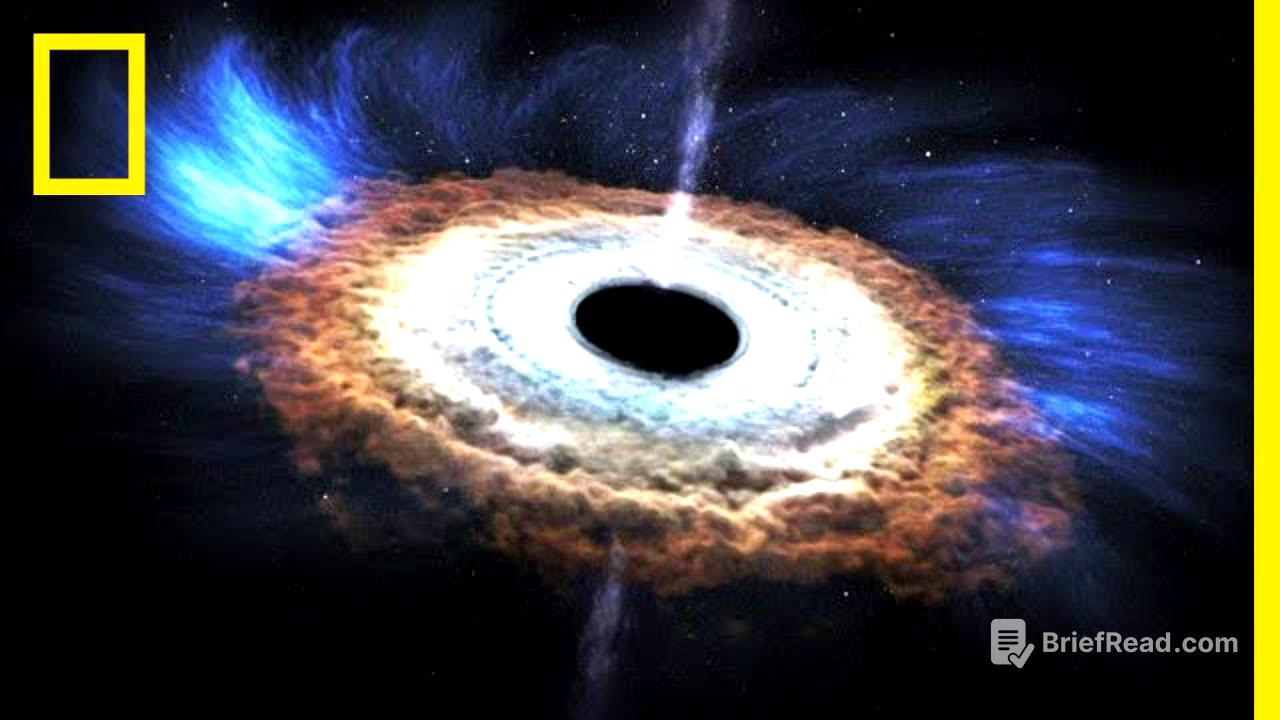TLDR;
Black holes are fascinating and mysterious objects with gravity so strong that not even light can escape. The boundary is the event horizon, leading to a singularity where physics break down. There are stellar and supermassive black holes. Stellar ones form from collapsed stars, while supermassive ones reside at the center of galaxies. Scientists study them by observing their effects on nearby matter like accretion disks and quasars. Black holes remained largely unknown until Karl Schwartzschild's calculations and the first discovery in 1971. They warp space and time, altering galaxies and inspiring scientists.
- Black holes have such strong gravity that even light cannot escape.
- Stellar black holes are formed from the collapse of massive stars.
- Supermassive black holes exist at the center of almost every large galaxy.
Intro to Black Holes [0:02]
Black holes are among the most fascinating and mysterious objects in the universe. A black hole is a region in space where gravity is so strong that nothing, not even light, can escape. The boundary of a black hole is called the event horizon, which is a point of no return. Anything that crosses the event horizon collapses into the black hole's singularity, an infinitely small and dense point where the laws of physics no longer apply.
Types of Black Holes [0:45]
Scientists have theorized about different types of black holes, with stellar and supermassive black holes being the most common. Stellar black holes form when massive stars die and collapse; they are roughly 10 to 20 times the mass of our sun and are scattered throughout the universe. There could be millions of these stellar black holes in the Milky Way alone. Supermassive black holes are giants, millions or billions of times more massive than our sun. Scientists are still figuring out how they form, but they exist at the center of almost every large galaxy, including our own. Sagittarius A, the supermassive black hole at the center of the Milky Way, has a mass of roughly four million suns and a diameter about the distance between the Earth and the Sun.
Detecting Black Holes [1:41]
Because black holes are invisible, scientists detect and study them by observing their effect on nearby matter. This includes accretion disks, which are disks of particles that form when gases and dust fall toward a black hole, and quasars, which are jets of particles that blast out of supermassive black holes.
History of Black Hole Discovery [2:03]
Black holes remained largely unknown until the 20th century. In 1916, using Einstein's general theory of relativity, a German physicist named Karl Schwartzschild calculated that any mass can become a black hole if compressed tightly enough. It wasn't until 1971 that theory became reality when astronomers studying the constellation Cygnus discovered the first black hole. An untold number of black holes are scattered throughout the universe, constantly warping space and time, altering entire galaxies, and endlessly inspiring scientists and our collective imagination.









